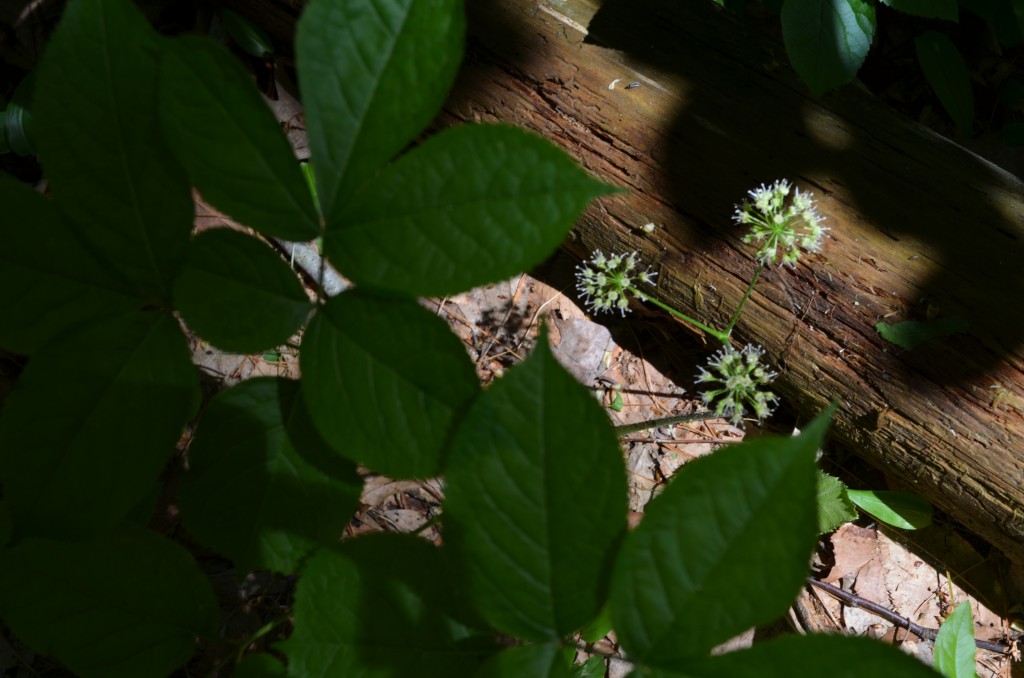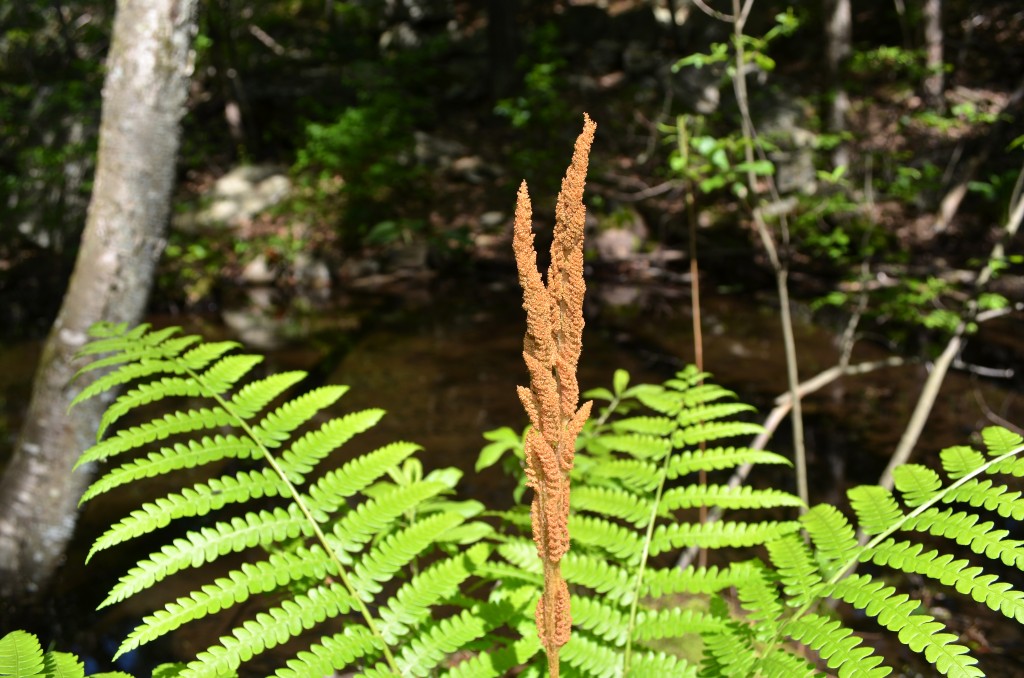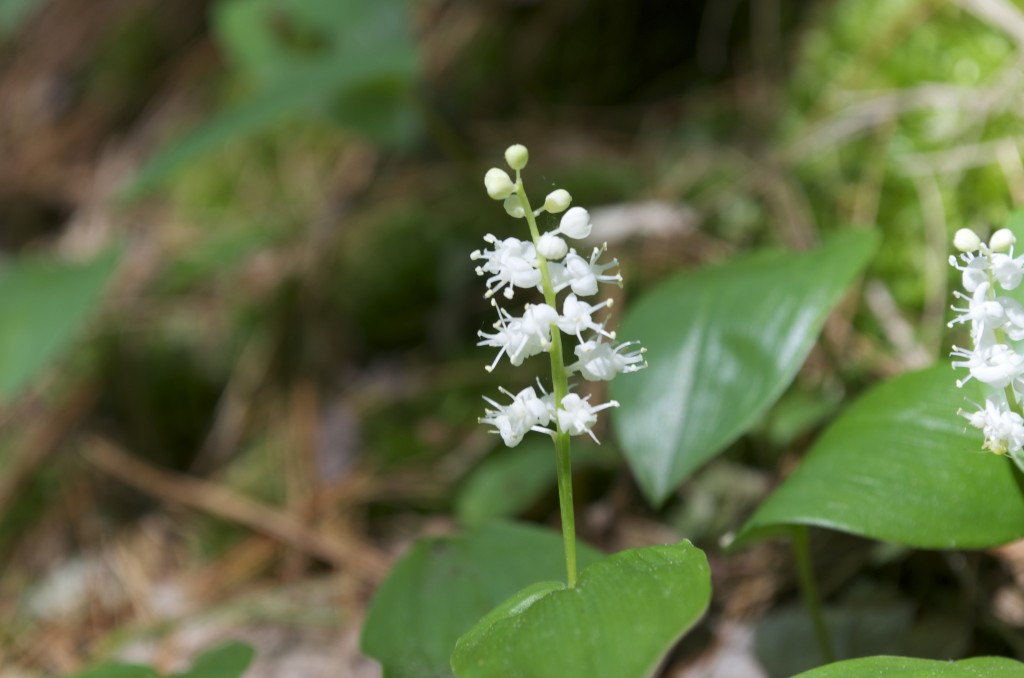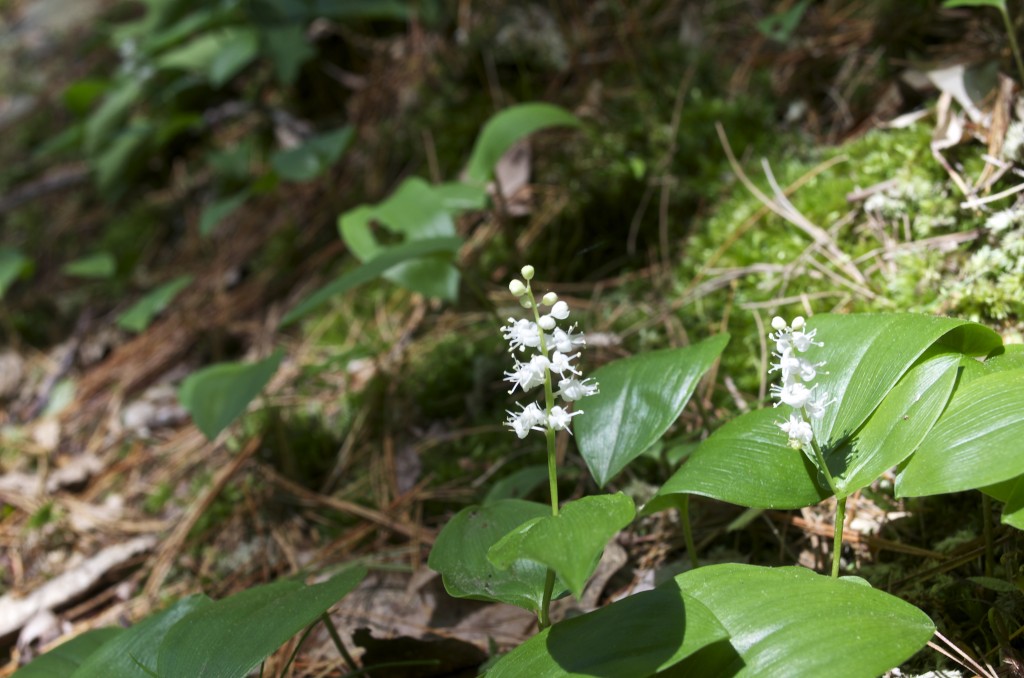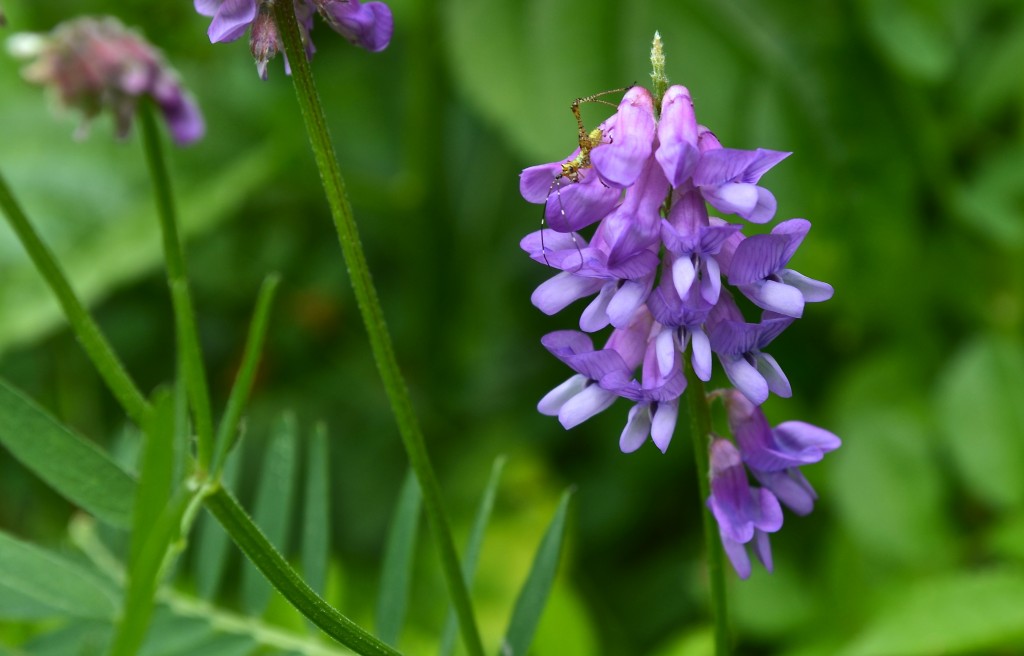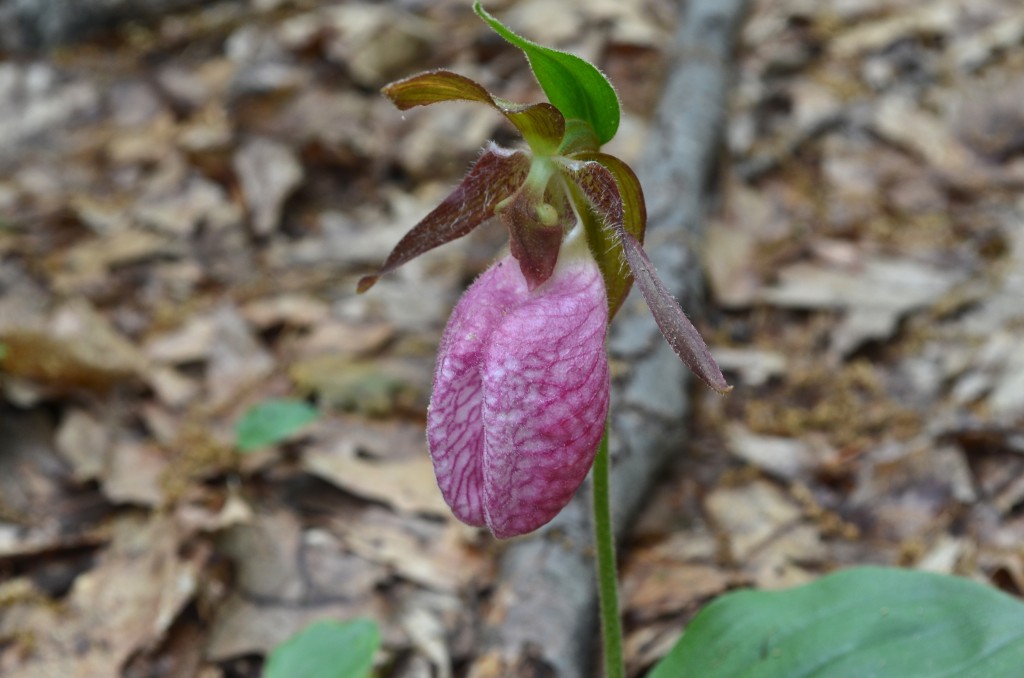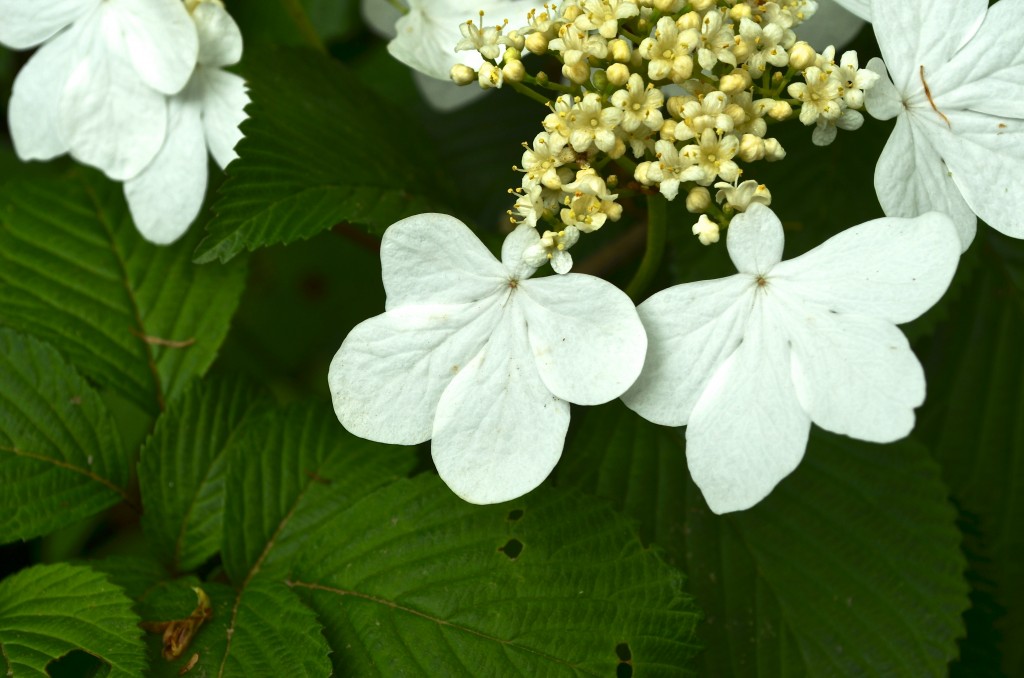In the ginseng family, which explains why the bloom looks so much like dwarf ginseng, but with three umbels at the top of the stalk, and leaves that tend to grow umbrella-like over the flowers. Will have purple-black berries, which are edible and a little sweet. This is not “true” Sarsaparilla. 1-2 feet tall. Native.
Wild Sarsaparilla (Aralia nudicaulis)

